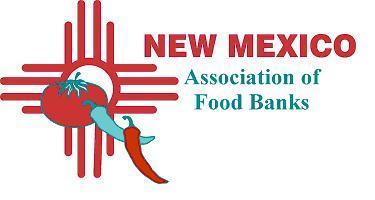
"If a tree falls in the forest and there is nobody around to hear it, does it make a sound?"
On May 20, the U.N.'s World Food Programme held its Third Annual Walk the World campaign to call for an end to childhood hunger. Hundreds of thousands of people in 118 countries organized marches in their communities to raise funds for WFP programs that address this problem.
The list of countries that held a walk was very diverse, including Burundi, Cambodia, Guatemala, Iran, Latvia, the Netherlands, Rwanda, the United Kingdom and many others. In the US, there were 57 such events, including New York City, which is sometimes considered the media capital of the world. We did not have a march in Albuquerque, but that's something we may consider for future years.
As far as I can tell, there was little or no media coverage in the U.S. The first media account I saw was an article in the Mexico City daily newspaper La Jornada, which was compiled from several accounts from international news wires: Agence France-Presse (France), Deutsche Press Agentur (Germany), Reuters (Britain), and Notimex (Mexico).
So I did a Google search under the "news" mode to see if I could find any U.S. coverge of the U.N. campaign. The Minneapolis Star Tribune had a feature about an event at The Mall of America, but I could not find any other accounts. This is despite the fact that the U.S. had more marches than any other country in the world. My Google search did find a very good article in London's newspaper The Guardian, entitled "Walk the World to raise millions in support of poor children."
There was also coverage in the Jordanian news agency Petra, the Sofia News Agency of Bulgaria, Tamil Week of Sri Lanka, China's Xinhua news agency and many others. The Swazi Observer of Swaziland, a tiny republic near South Africa, wrote about the participation of a deputy prime minister in that country's fund-raising efforts for Walk the World.
While the main purpose of the Walk the World campaign is to raise funds for worthwhile U.N. programs to end childhood hunger, the effect of the publicity generated by the marches around the world cannot be discounted. The effort is very much tied to The ONE Campaign and the Make Poverty History campaign, which aim to gain greater commitment from people around the world to fight extreme poverty and disease.
The WFD campaign also ties in directly with the first and fourth goals of the Millenium Development Goals, which aim to Eradicate Extreme Poverty and Hunger and Reduce Child Mortality. The WFD efforts are also compatible with Bread for the World's One Spirit, One Will, Zero Poverty campaign, which urges Congress to meet our country's commitment to double assistance to Africa and the developing world by 2010 (which would mean allocating $5 billion in additional poverty-focused development assistance in the 2007 budget).
While the WFD got very little press in the U.S. media, the one personality most identified with The ONE Campaign, singer Bono of the rock band U2, received a lot of coverage that same week with his trip to Africa. Accompanying Bono was NBC anchor and managing editor Brian Williams. Williams gives a personal account of his experiences in his blog. In fact, the MSNBC web site has an entire section devoted on the trip to Africa.
As one who studied communications and journalism in college, I understand the decision-making process that goes into determining whether a story is "newsworthy." Sometimes it's not the event itself, but how you portray the event that creates "news."
In our modern times when the line between news and entertainment has been blurred, it takes "star power" to get coverage about hunger and poverty, as Bono and The ONE Campaign know very well. Fortunately, many celebrities involved in The ONE Campaign like Salma Hayak, Dikembe Mutombo and Brad Pitt are also legitimate anti-hunger and anti-poverty advocates.
But it shouldn't take celebrities to keep the issue on our radar screen, especially when the message is that ending hunger, poverty and disease is a legitimate and achievable goal.
[Note: The above illustration is the official logo for the Walk the World campaign]


